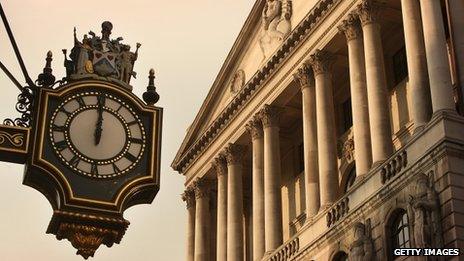The cost of making big banks safe
- Published
- comments

US and British regulators have agreed a common approach to limiting the damage for customers and taxpayers that is caused when a giant bank gets into difficulties.
The Bank of England and America's Federal Deposit Insurance Corporation have issued a joint paper which is in essence an action plan for making the biggest banks - such as the UK's Royal Bank of Scotland and Barclays, and Citigroup and JP Morgan in the US - safer.
At the heart of their plan is the idea that a single national regulator would take responsibility for overseeing the insolvency of a big international bank, a so-called GSIFI (don't ask) - which is an attempt to prevent a repetition of the uncertainty and confusion caused after Lehman collapsed in 2008.
The Bank of England and FDIC also want big banks to hold enough capital and debt that could be converted into capital at the apex of their complicated corporate structures, so that this capital and debt could absorb any losses that would be generated as the bank is resolved or made safe.
Other planks of their new approach would be to make sure that a bank's critical services continue to operate in a crisis, to endeavour to insulate foreign operations, to shrink the bits of the bank that caused the problems, and to sack culpable management.
One important consequence would be that in the next banking crisis, the Bank of England would not - in theory - have to call on the Treasury to put quite so much money into a Royal Bank of Scotland or an HBOS that was facing collapse, because the creditors of those banks would be forced to become shareholders.
If successful, this should limit the costs to taxpayers and the wider economy in the next banking crisis.
But if investors and creditors regard the proposals as credible, if banks are no longer considered too big to fail, the costs for banks of raising money would rise: as you will have deduced, the risks of investing in and lending to banks increases in proportion to the perceived reduction in the implicit insurance against failure they receive from the state.
What happens when banks find it more expensive to borrow or to issue equity capital? They have to make bigger returns to generate a profit. And, everything else being equal (as they say), that means they would feel obliged to charge their customers rather more for loans and for keeping money safe (cough).